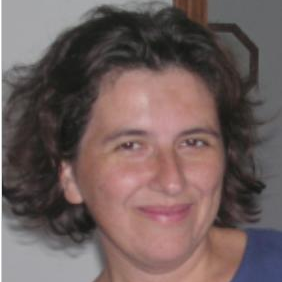Advances in Osteoimmunology and Bone Biology
A special issue of International Journal of Molecular Sciences (ISSN 1422-0067). This special issue belongs to the section "Molecular Biology".
Deadline for manuscript submissions: closed (31 August 2022) | Viewed by 14877
Special Issue Editors
Interests: bone and cartilage biology; osteoarthritis; post-traumatic osteoarthritis; Wnt signaling; cancer metastasis
Special Issues, Collections and Topics in MDPI journals
Interests: immunology; stem cell biology; hematopoiesis; skeletal biology
Special Issues, Collections and Topics in MDPI journals
Interests: bone; osteopetrosis; osteoporosis; bone metastases
Special Issues, Collections and Topics in MDPI journals
Special Issue Information
Dear Colleagues,
Traditionally, osteoimmunology investigated the molecular mechanisms underlying bone destruction associated with inflammatory diseases, and focused primarily on the role of osteoclasts in bone homeostasis. In recent years, it has become increasingly clear that other pathologic conditions and genetic deficiencies in immunomodulatory molecules also elicit skeletal phenotypes. The advent of OMIC approaches has also revealed that the immune and bone systems share many molecules, including cytokines, chemokines, transcription factors and signalling molecules and that bone cells reciprocally regulate immune cells and haematopoiesis. Here, we invite the submission of new studies that have explored the role of immune cells and immune cell-derived factors that control, regulate, or influence the function of osteoblasts, osteoclasts, and osteocytes. Similarly, we also seek studies where defects in molecules expressed primarily in skeletal cells, or alleles associated with skeletal phenotypes, reciprocally affect the development, persistence or behavior of immune cells in the bone marrow, or systemically.
Prof. Gabriela G. Loots
Dr. Jennifer O. Manilay
Dr. Nadia Rucci
Guest Editors
Manuscript Submission Information
Manuscripts should be submitted online at www.mdpi.com by registering and logging in to this website. Once you are registered, click here to go to the submission form. Manuscripts can be submitted until the deadline. All submissions that pass pre-check are peer-reviewed. Accepted papers will be published continuously in the journal (as soon as accepted) and will be listed together on the special issue website. Research articles, review articles as well as short communications are invited. For planned papers, a title and short abstract (about 250 words) can be sent to the Editorial Office for assessment.
Submitted manuscripts should not have been published previously, nor be under consideration for publication elsewhere (except conference proceedings papers). All manuscripts are thoroughly refereed through a single-blind peer-review process. A guide for authors and other relevant information for submission of manuscripts is available on the Instructions for Authors page. International Journal of Molecular Sciences is an international peer-reviewed open access semimonthly journal published by MDPI.
Please visit the Instructions for Authors page before submitting a manuscript. There is an Article Processing Charge (APC) for publication in this open access journal. For details about the APC please see here. Submitted papers should be well formatted and use good English. Authors may use MDPI's English editing service prior to publication or during author revisions.
Keywords
- osteoimmunology
- bone marrow niche
- hematopoiesis
- high bone mass
- low bone mass
- osteoclast
- osteoblast
- osteocyte
- cytokines
- chemokines
- immune modulation
Benefits of Publishing in a Special Issue
- Ease of navigation: Grouping papers by topic helps scholars navigate broad scope journals more efficiently.
- Greater discoverability: Special Issues support the reach and impact of scientific research. Articles in Special Issues are more discoverable and cited more frequently.
- Expansion of research network: Special Issues facilitate connections among authors, fostering scientific collaborations.
- External promotion: Articles in Special Issues are often promoted through the journal's social media, increasing their visibility.
- Reprint: MDPI Books provides the opportunity to republish successful Special Issues in book format, both online and in print.
Further information on MDPI's Special Issue policies can be found here.








